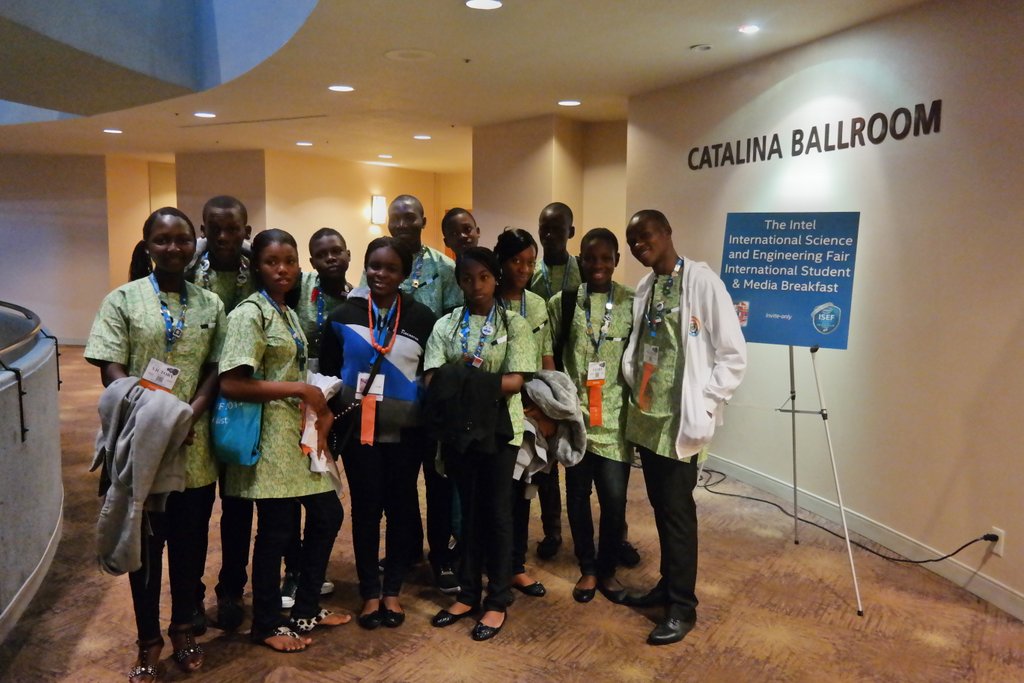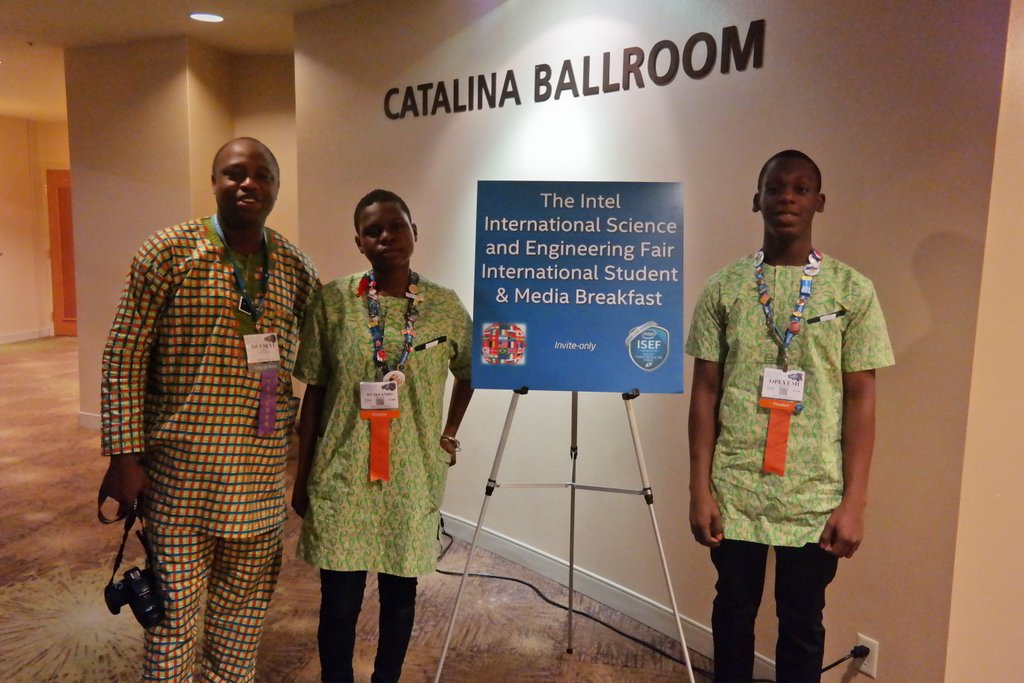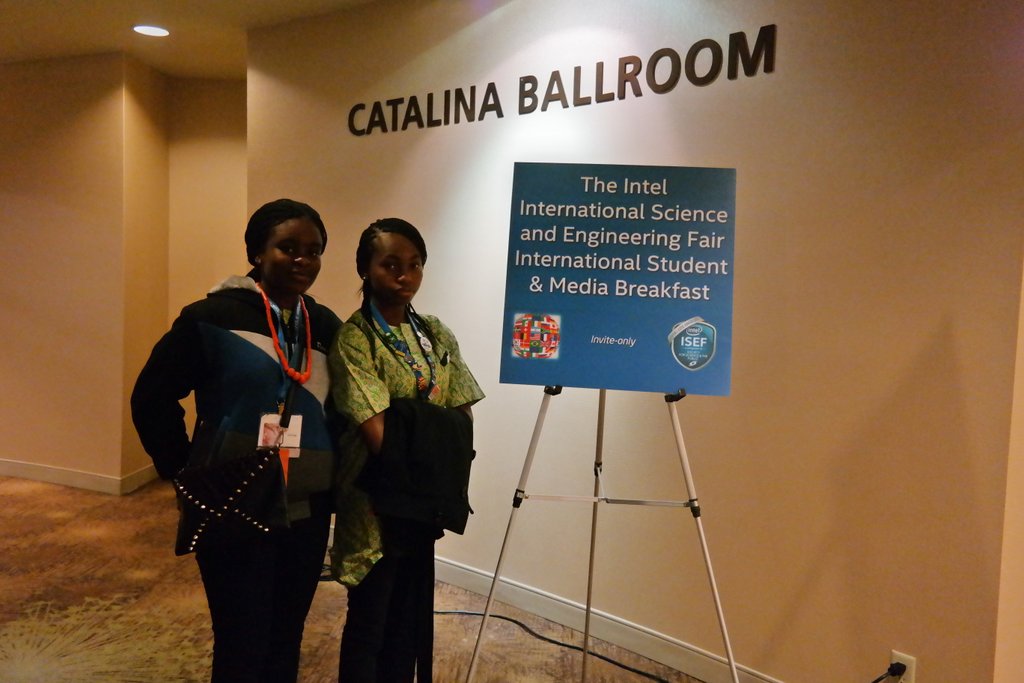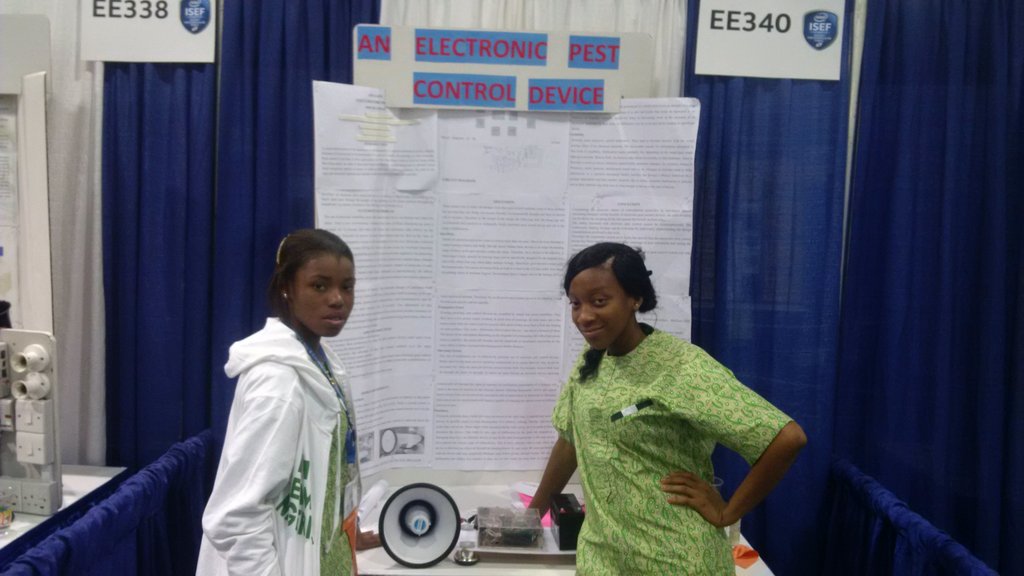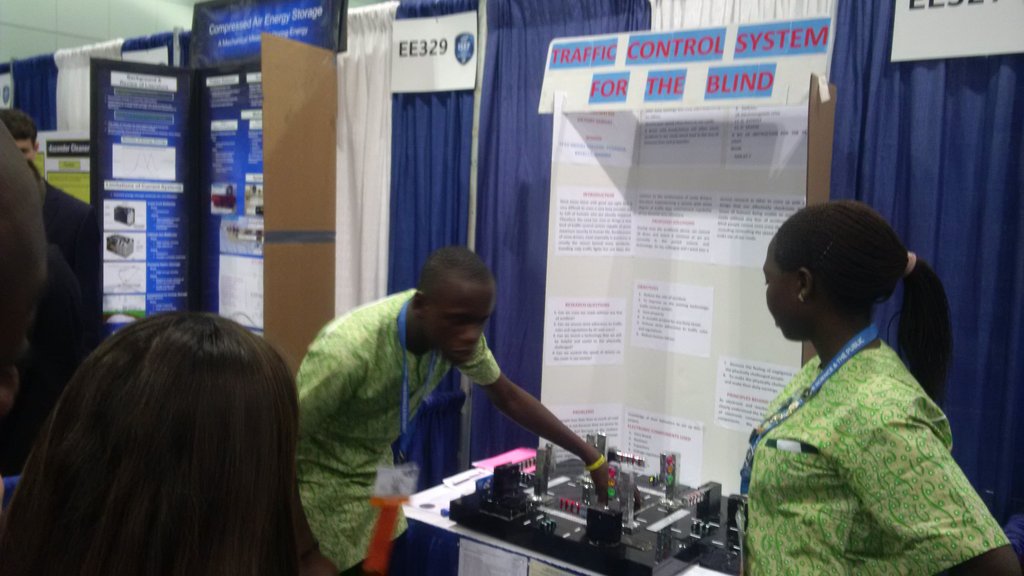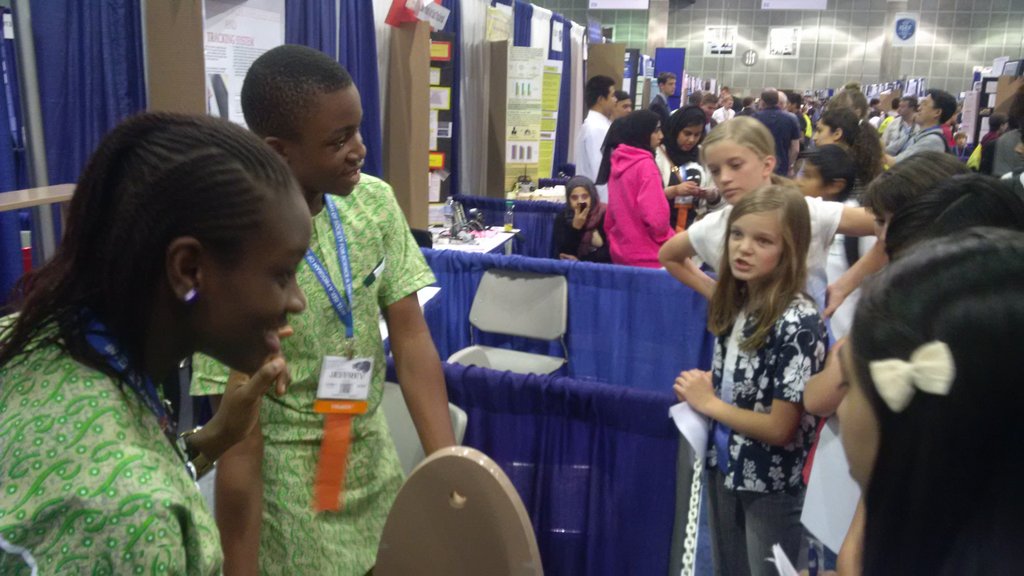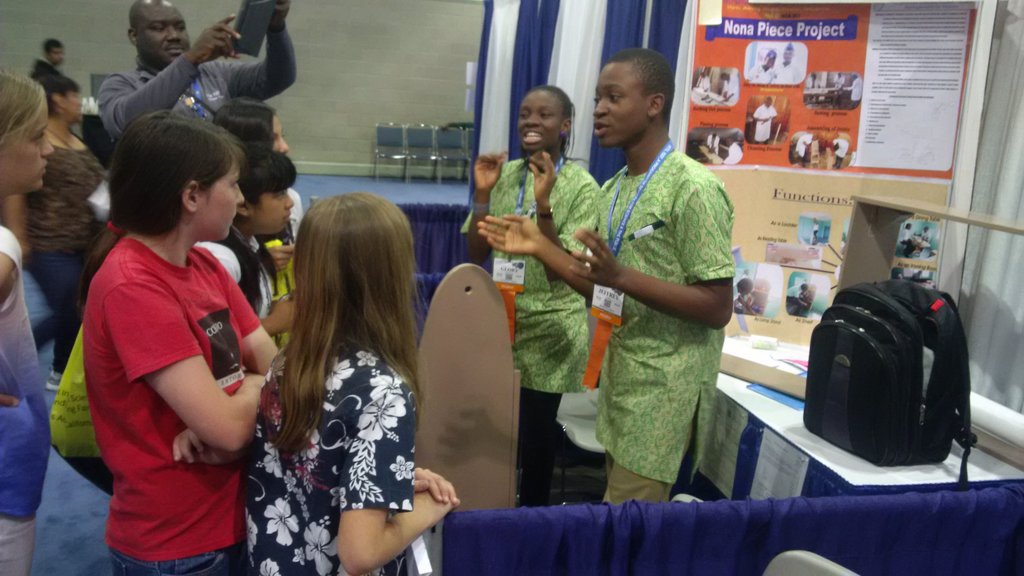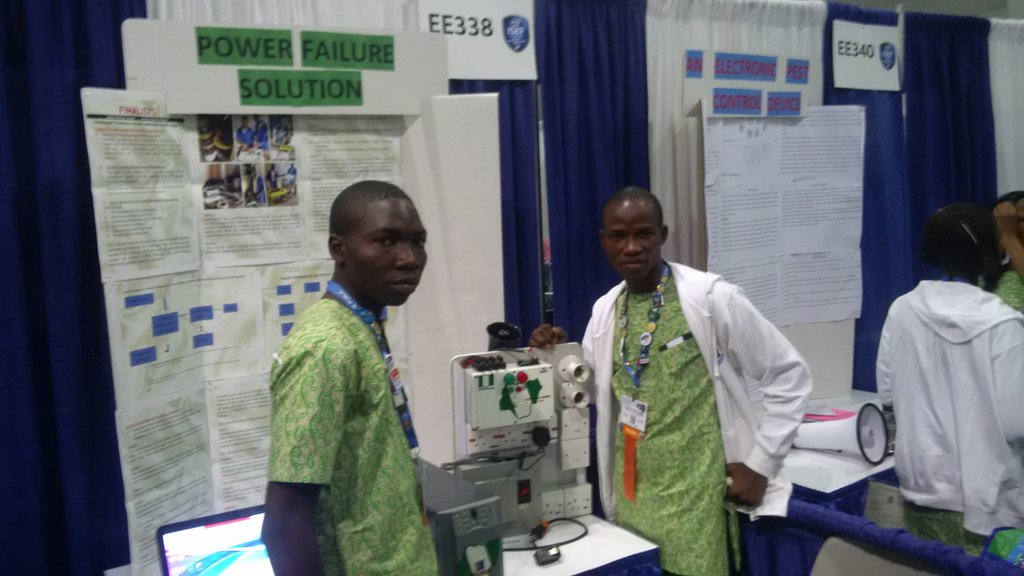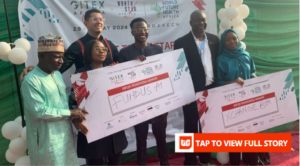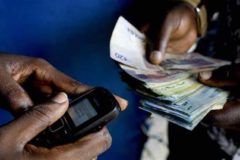Wading in a sea of genius children from all over the world gathered at the Los Angeles Convention Center, I was looking for the Nigerian delegation.
The six teams who had come tops at the National Festival of Secondary School Science were here to demonstrate their work on ISEF’s global platform. Not a lot, when compared to some of the bigger delegations from countries like China, but even more than last year. Over the years, Africa’s footprint in the ISEF event has grown larger. The 2014 edition held last week witnessed a first-time showing from Kenya.
I have never felt as dumb as I did this time last week while I was wandering through a crowd of high school students in that massive complex. The median age of the 1,600 teenagers thronging the massive building seemed closer to fifteen, and yet these teenagers were demonstrating some frighteningly advanced research. These kids are taking on some of the hardest scientific questions in the world with straight faces. You could be excused for thinking they were there to play ten-ten, until you are engaged by a 15 year-old who is pushing the envelope of personalised medicine with a cloud-based application that analyses disease causation across geographies, populations and races, based on publicly available genomics data. That is the work of tenth grader, Swetha Revanur from Evergreen Valley High School in California. Unless you are Elon Musk, in my shoes you would probably have felt dumb listening to her too. Or Jovanay Carter, 17, from Atlanta who is working on stem cell regenerative medicine. Or the two Puerto-Rican kids who are studying the effects of wireless signals on circadian rhythms.
But back to the Nigerian kids, whose creations are considerably more relevant to this clime.
Doregos Private Academy in Lagos has become a regular fixture at the ISEF event, sending not one but two teams to present. Mr. Olaide Lawal, their handler has been working at the academy for more than twenty years, and taking his students to science competitions for more than half of those. Although his pedagogic origins are in agricultural science, Mr. Lawal began to dabble into electrical and software engineering, a hobby that eventually found an outlet via the 2003 edition of the JETS competition, in Sokoto. If you heard about the girls whose urine-powered generator made global tech headlines in 2013, he is their teacher.
Inspired by the success of the urine powered generator, another group of Mr. Lawal’s students fielded another generator contraption. One that is capable of using three types of fuel, including engine oil, which is considered a waste product and ends up polluting the environment. Not anymore, if Ruth Kpakpando and Jubril Opeyemi, 14 and 17 years old respectively and designers of the tri-powered generator have anything to say about it. While it needs petrol to get going, their generator will switch to other fuels within five minutes of operation.
However, it would be the second team that would bag a Second Life Science Award worth $1,000. Eveshorhema Samuel-Alli and Ibukunolowa Oladeinde, 14 and 15, have found that walnuts can cure halitosis.
Chinyere Nicholas and Imelda Osaji from the Maryam Babagangida Girls Science College in Minna created a pest control device that makes it okay for farmers in the north to stop sending their children to the farm at 6am to scare pests away. This electronic scarecrow mimics the sounds of common predators and its range extends for kilometres around.
How do blind people cross the road? Edi Peremobowei and Victory Samuel from Teto Model College in Yenagoa figured they’d make it easier by designing a traffic control system for that makes walking around safer for the visually impaired.
Glory Uko Ibanga and Jeffrey Jude from the Air Force Comprehensive School in Uyo had a field day describing how their extremely functional piece of furniture they designed works. Eager kids watched as the Nona Piece transformed into a work table, then a clothes rack, and then a ladder.
The kids really think this is cool.
These two geniuses here need to find a sexier name for their creations, but they are no less impressive. After devising a way for an electrical system to switch seamlessly across various power sources (NEPA, generator and inverter), Dauda Ibrahim and Olufemi Salami went on to devise a way for you to turn any of them on from miles away with…you guessed right…your mobile phone.
As I made my way from booth to booth, I recall never feeling dumber in my life. I also recall never feeling more inspired. Or hopeful. Nigeria, meet your whiz kids. Now, how do we make more?









